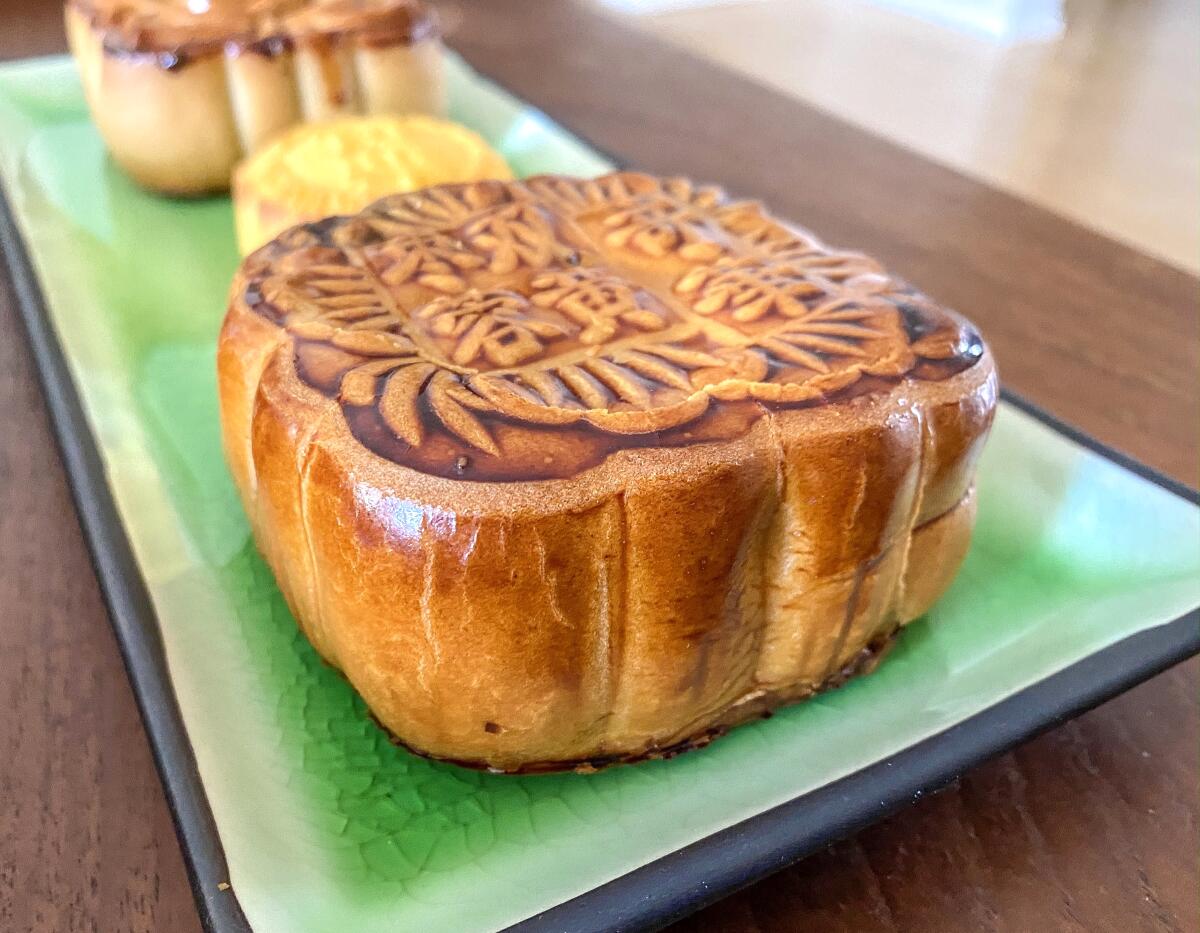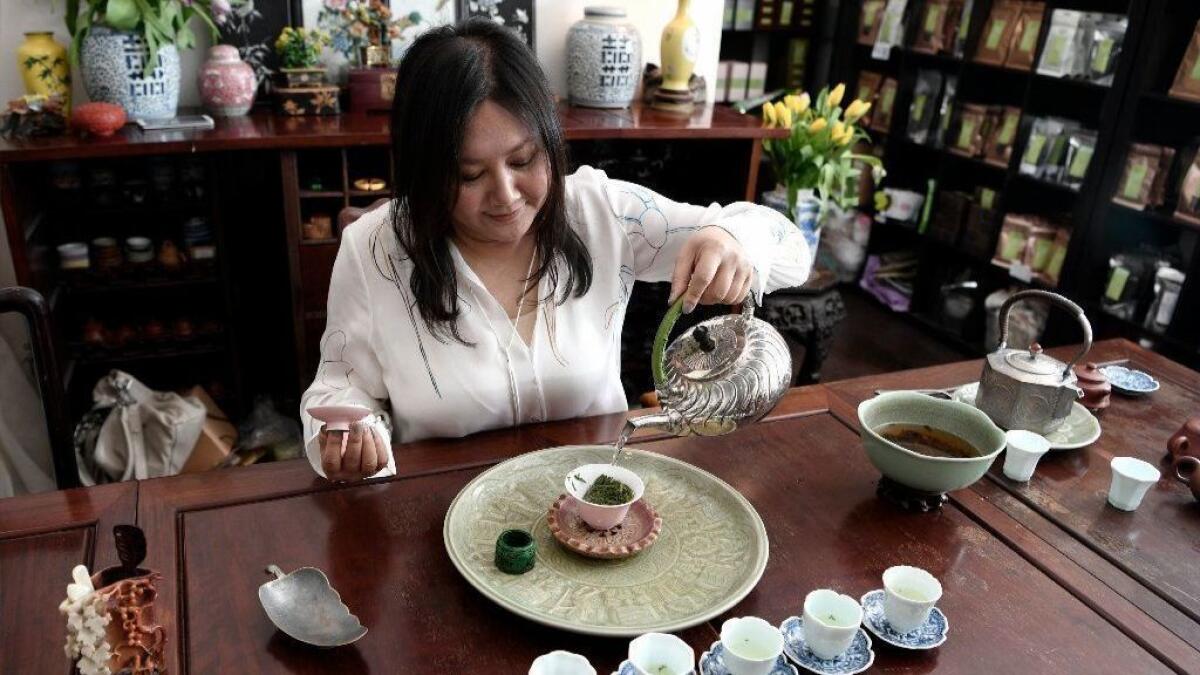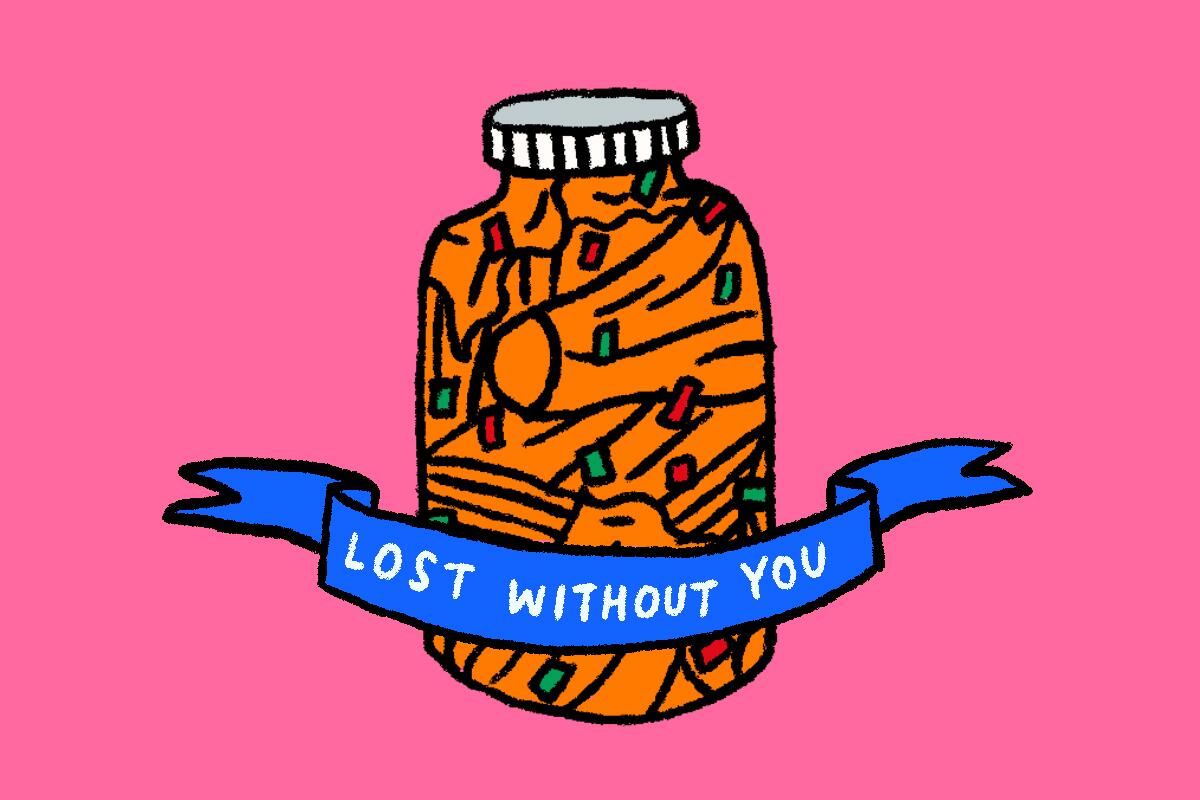Finding extra meaning in mooncakes this Mid-Autumn Festival

- Share via
“There are two reasons why you want tea with mooncakes,” said Peter Luong, owner of Song Tea & Ceramics in San Francisco, over FaceTime this week. “First, it’s a traditional pairing. Second, those things are calorie bombs. The pastry is often lard and sugar. To have tea cut through the richness is very satisfying.”
The 2020 Mid-Autumn Festival, during which sharing mooncakes is an essential ritual, began Thursday — unusually late in the calendar year. The holiday aligns with the 15th day in the eighth month of the lunar calendar. Celebrated in China, Taiwan, Vietnam and Korea, among many countries in South and East Asia, and around the world, it’s a time of reunions, feasting, expressions of gratitude and lighting lanterns in the darkness.
Eat your way across L.A.
Get our weekly Tasting Notes newsletter for reviews, news and more.
You may occasionally receive promotional content from the Los Angeles Times.
My formative mooncake moment came while drinking decades-old pu-erh at LockCha, an ornate park-side Hong Kong tea house adjacent to the city’s Museum of Tea Ware. The 3,000-year-old pottery and the demonstrations of gongfu cha riveted this tea geek; my partner at the time mitigated his boredom by slipping into a state that resembled sleepwalking.
Mooncakes these days might be filled with custards or chocolate or ice cream, but the ones served at LockCha stayed close to tradition and swelled with smooth pastes of red bean or lotus root. Pu-erh can be wild to drink; at first, the flavors might register as dirt and a sort of liquid electricity (if one could pinpoint the taste of voltage) and then, after many steepings, they mellow into herbal-vegetal sweetness. I remember how hot it was at the end of Hong Kong’s summer, and how the tea, as Luong said, lightened the pastry. They complemented one another without fuss.
I particularly craved mooncakes this year — in large part because I’m worried about our communities in which they play a cultural role. Also, it was an excuse to connect with tea buddies.

It was oddly reassuring to see that, even during a pandemic, there’d been an obvious local run on mooncakes. Last weekend, before picking up a Macau-style pork chop bun and shrimp fried rice from Pearl River Deli for lunch, I swung by Phoenix Bakery, a Chinatown institution in business since 1938. They were already selling out of mooncake variations stuffed with multiple salted egg yolks (symbolic of the full moon), though I scored a red bean with double yolk as well as a white lotus bean and the classic savory version — ham with nuts and seeds. The red bean, its pastry yielding and softly golden, comes as close to the memory of the LockCha exemplar as any I’ve tried in Los Angeles.
A couple of days later I spent a longer-than-usual afternoon meandering through the San Gabriel Valley. (If you value its culinary riches, I urge you to support its restaurants any way you feel comfortable. Dim sum to-go from Lunasia in Alhambra proved to be an uplifting feast recently, and I’m so happy that Yang’s Kitchen is back to making stir-fried eggs with tomatoes over rice and other comforts.) I beelined for LA’s Bakery in San Gabriel, a seasonal retail business renowned for mooncakes. Ugh, too late: Its building metal gate was bolted. A handwritten sign said “Mooncakes sold out!” in several languages.
I backtracked to Hawaii Supermarket, which my friends in the SGV refer to as “the grocery store that sells $1,000 bottles of wine.” Elaborate boxes of mooncake sat stacked near the cash registers and a locked cabinet displaying jeroboams with Silver Oak labels, but the pastries were plenty picked over. I bought a box of mixed mooncakes — in flavors of lotus seed, taro, coconut and durian, all patently sweet — made by Mai’s Bakery in Monterey Park.
Next stop: the local outlet of Kee Wah Bakery, a company based in Hong Kong. Ornate molds shape the mooncakes into forms of flowering lotuses with Chinese characters pressed into their crowns. The one filled with red bean, date and preserved egg yolk was for me, and I purchased a few others as gifts for friends.
Imen Shan, owner of Tea Habitat in Alhambra, joined me after the Kee Wah stop for a well-distanced lunch across the street in Hilton Plaza; it was quiet, like too many of the SGV’s restaurant-filled shopping centers. We landed at Killer Noodle, which opened its second location in December. Like the Sawtelle original (from the creators behind Tsujita), it specializes in tantanmen, the spicy ramen round-aboutly inspired by Sichuan dan dan mian. Three noodle dishes, available with or without soup, constitute the stripped-down menu.
The restaurant had set up four tables outside, spaced generously apart. We split bowls of noodles — tangles of bouncy strands and pork, one with a cloud cover of peppery tofu and the other crimson with chile — and slipped in a carry-out order of pork and shrimp chow fun from Yin Ji Chang Fen two doors down.
I asked Shan what type of tea I should pair with the mooncakes I’d bought. Shah has exquisite taste — her collection of aromatic dan cong oolongs sent me down an obsessive rabbit hole I’ve never really emerged from — but in conversation she’s not one to toss around adjectives or closely debate varietals.
“Just drink the wild black tea you bought last month,” she said with a shrug. End of discussion. (Also: That tea has a distinct honeyed quality, and she was exactly right).
On FaceTime a couple of hours after lunch, Luong told me to brew teas with mooncakes that were “darker, richer, roastier.” He, too, suggested black teas (also known as red teas) — including an aged Taiwanese red, with notes of dried dark fruits, that is sold at Song Tea & Ceramics. (He told me he was going to see his mother for the Mid-Autumn Festival for the first time since the pandemic; she was making a Cantonese mushroom stew.)
“Brew the tea extra strong and hot,” he said, circling back to our main topic before we ended the call.
I’d reached out to Shan and Luong under the guise of journalistic curiosity. Really, I’d just wanted to know they were both OK and to spend a little time in their company — lighting lanterns in the darkness.
Enjoying this newsletter? Consider subscribing to the Los Angeles Times
Your support helps us deliver the news that matters most. Become a subscriber.
Los Angeles Times dinner series
The Los Angeles Times Dinner Series returns at 6:30 p.m. Oct. 10 with a Porridge & Puffs and Alta Adams collaboration and a live discussion hosted by L.A. Times Food columnist Ben Mims. The three-course soul food meets Asian-inspired comfort food dinner will include black sesame vichyssoise, beef-oxtail-stuffed scallion rice-cassava crepes, and brown-butter mochi. Tickets, $160 per person, can be purchased at Eventbrite, and dinners will be available for pickup on the day of the scheduled event.
Have a question for the critics?
This week’s must-read special section
Food team colleague Brian Park wrote and compiled a magnificent whopper of a special section devoted to all things kimchi. Guides, big-picture context, recipes — it’s a stunning collage of an essential Angeleno food.

Eat your way across L.A.
Get our weekly Tasting Notes newsletter for reviews, news and more.
You may occasionally receive promotional content from the Los Angeles Times.



